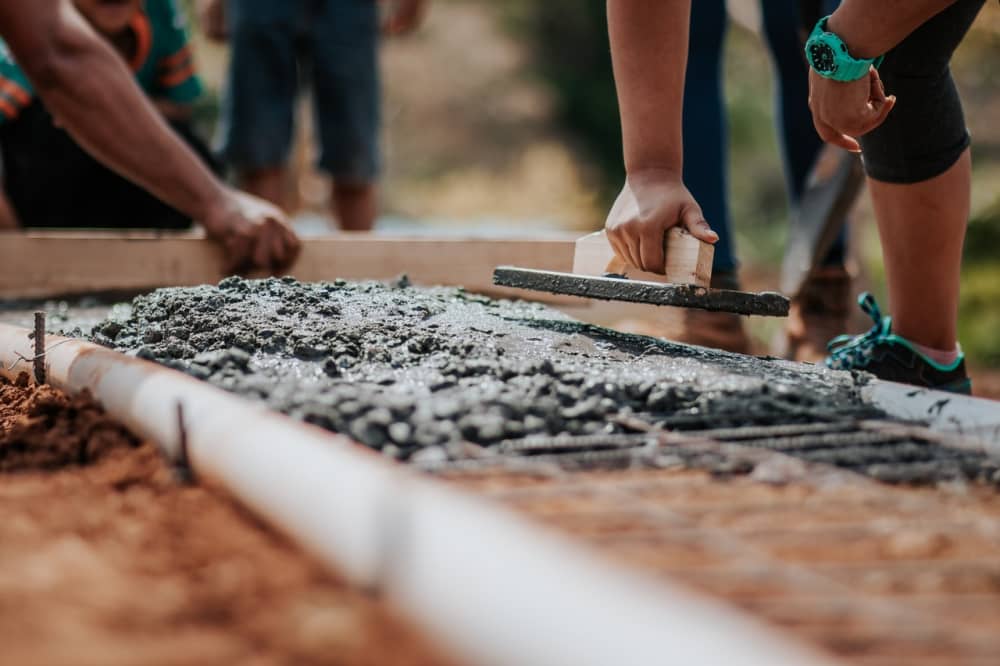There are two types of foundations when building: shallow foundations and deep foundations. The foundation is one of the most important parts of a structure as it transfers the total load from the structure itself to the ground to provide stability. Shallow foundations are a type of foundation used in specific buildings and projects.
What is a Shallow Foundation?
A shallow foundation is a type of building foundation that sits closer to the earth. Shallow foundations are wider than they are deep, making them cheaper and quicker to build. They are commonly used when building lighter, smaller structures.
Types of Shallow Foundations
There are four types of shallow foundations:
1. Strip footings or continuous footings
2. Spread footings or isolated footings
3. Combined footings or cantilever footings
4. Mat foundations or raft foundations
Continuous or Strip Footings
A strip footing is used to maintain a load-bearing wall. It is designed so the footings are so close together that they overlap one another. Having a strong foundation that can specifically support a load-bearing wall is vital to keep a building stable and to maintain the structure and lifespan of the building.
Isolated or Spread Footings
Spread or isolated footings are used to support individual columns. This footing is either circular, square or rectangular in shape. They are also thick in design to help spread the load over a larger area. The thick design helps ease the pressure that the structure puts on a specific spot since it spreads the weight evenly across the footing.
Cantilever or Combined Footings
Combined or cantilever footings are used to support two columns together. They prevent overlapping of load pressure or when a property line is too close together that spread footing would make the structure unstable. Using a combined footing allows for the load to be evenly distributed when combined with an interior column.
Raft or Mat Foundations
Mat or raft foundations are a type of slab foundation that supports a number of columns and walls under an entire structure. This is required when the soil pressure has a low bearing capacity and prevents other footings from being used. Mat foundations support all loads at once and transmit the weight to the ground evenly.
Construction Equipment Used for Shallow Foundations
Construction equipment is used throughout the entire foundation-building process. Different machines are used for clearing land, removing debris, digging and leveling and then pouring and settling the foundation itself.
Clearing the Land
The first step includes preparing the location where the building will be built and the foundation needs to be set. The site preparation crew commonly uses machines like backhoes and dozers to clear the site from any trees, rocks and debris before digging. Backhoes and dozers are important pieces of equipment in this process because their design and power allow for all debris to be removed easily, preparing the area for the foundation.
Constructing the Hole for the Foundation
The second step is to actually dig the hole for the foundation. Excavators are the most common machines for this task. An excavator is used to dig the depth of the foundation and completely level the soil in order to provide a stable environment for the foundation. If the foundation isn’t level, the whole building can be crooked or uneven. Modern technology in machines can make this much easier.
Excavators are also used when building the foundation. They can create crawl spaces in which the concrete is poured and settled, which helps in laying the individual footings and walls of the foundation. The concrete that is poured into the crawl space helps provide a firm surface for the foundation to prevent shifting of the building or the creation of an uneven structure.
When Are Shallow Foundations Used?
Shallow foundations are commonly used for projects that are smaller in size and lighter in weight. They are common when the lowest finished part of the structure is less than six feet deep and the dirt around the project has sufficient bearing capacity. When these two pieces align, it creates a perfect situation for a stable shallow foundation.
This type of foundation is most commonly used for small residential and wood structures such as building a home or a cottage.
Pros & Cons of Shallow Foundations
Shallow foundations also provide some pros and cons.
Pros
Shallow foundations are exactly what they’re called: shallow. This means that it takes less time to clear and excavate the land. The construction is cost-efficient because it requires a shorter dig depth and actually constructing the foundation itself is simpler due to the smaller size.
Shallow foundations normally are constructed in a shorter time. Settling both the foundation and ground underneath is quicker as there is less land that is required to cover. Building the actual structure itself can begin earlier. All in all, the entire project can move faster.
Cons
If it is near water, shallow foundations cannot be used because the groundwater can impact the compaction and stability of the soil. It is important to ensure that the soil has a proper bearing capacity because if it does not then this will result in an unstable structure being created. Shallow foundations in general also have a lighter bearing capacity so they can only be used with smaller and lighter buildings.
Shallow Foundations 101
A foundation is the lowest part of a structure that has to be created to provide stability. The foundation provides direct contact with the ground and transfers the weight of the structure itself to the soil below to provide a firm, stable structure. Shallow foundations are ideal when they are used when the building that is being constructed is less intensive and bears less weight.

